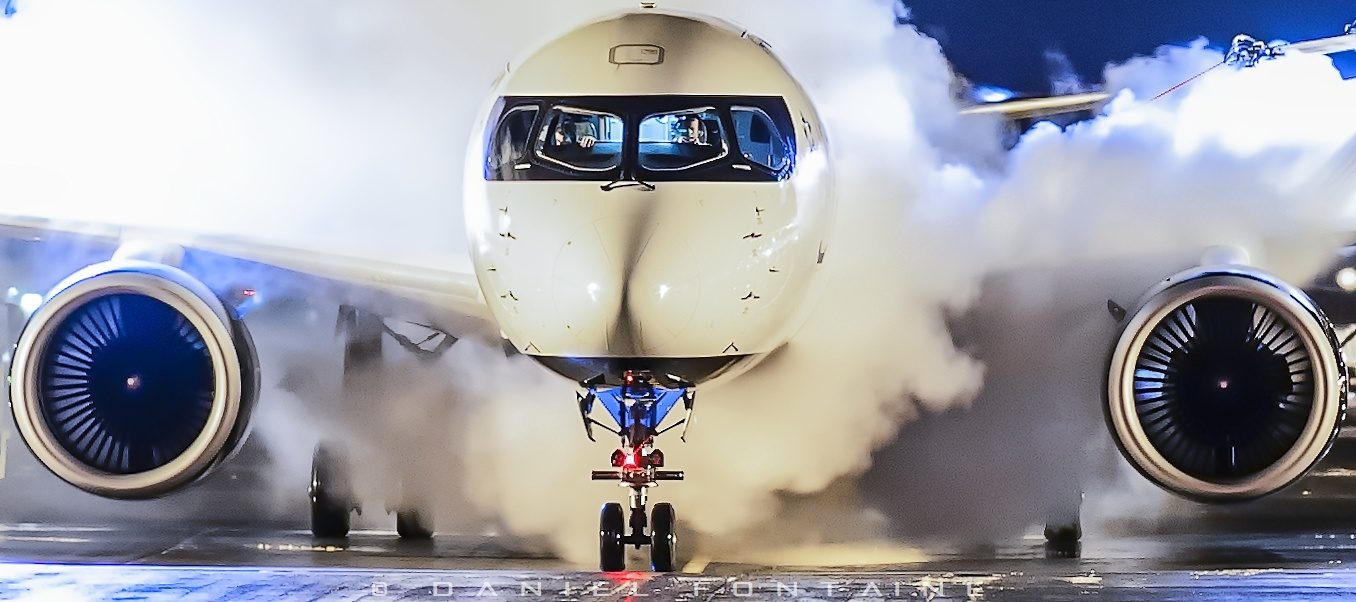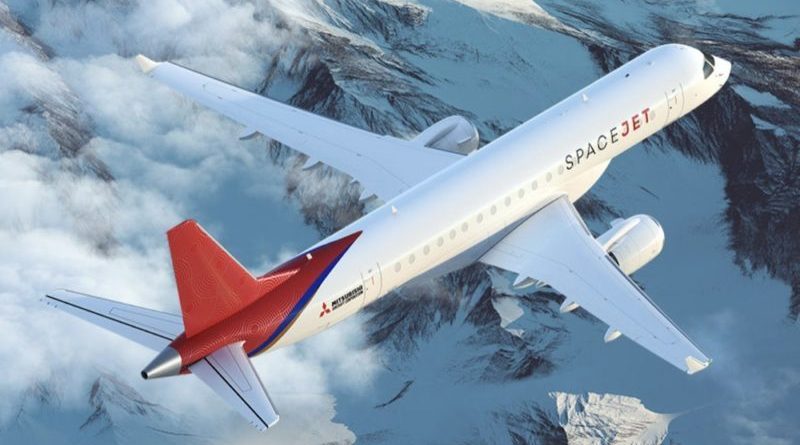Lets talk about SpaceJet
The Mitsubishi Aircraft Corporation (MITAC) press conference allowed us to establish a first real contact with them. Whether privately or publicly, we had several discussions with MITAC leaders. Here is what we have learned.
Mitsubishi 101
Mitsubishi is a company little known in Quebec; before talking about the Spacejet, we give you a brief portrait of this Japanese giant. Mitsubishi Corporation is a multinational company with annual revenues of more than $ 140 billion USD. The Mitsubishi Heavy Industries Division (MHI) has an annual turnover of nearly 38 G USD. She builds boats, trains, planes and many other things. One of its business units is a major supplier of Boeing and Bombardier.
MHI Canada manufactures several components for all Boeing commercial aircraft programs. It also manufactures Global 5000, 5500, 6000 and 6500 wings. The final assembly of all components for Boeing and Bombardier is done in Mississauga, Ontario.
MITAC is an 80% owned subsidiary of MHI and reports directly to management in Nagoya, Japan. It should be understood that MITAC is a separate business unit from the one who is a Boeing and Bombardier supplier. MITAC and MHI aerospace are two companies independent of each other. Each one decides on their own orientations, but they also coordinate to avoid getting on each other’s feet.
It is the parent company MHI that is involved in negotiations with Bombardier to acquire the CRJ program. For this reason, MITAC leaders make no comment about the CRJ.
The revival of the regional aircraft program.
Three years ago, MITAC hired several engineers who had worked on C Series certification. Quickly, the newly formed team realized that the MRJ was not certifiable because it had several design flaws. The team had to make a number of difficult decisions, including postponing certification for the umpteenth time. Then she quickly got down to the task of finding the patches in order to regain the MRJ90 certification.
Since the MRJ regional aircraft program was launched in 2008, the needs of the market have changed a lot. The new MITAC organization concluded that the scope clause limiting regional aircraft in the United States would not change. The MRJ70 could not then be sold in the United States because it was too heavy. In these circumstances, the management team had no choice but to review the MRJ program in depth.
The SpaceJet M90
The team’s review work culminated last June with the announcement of SpaceJet. Essentially, the SpaceJet M90 is the same aircraft as the MRJ90 and will carry up to 92 passengers. The difference from the old version is that it has been modified to conform to the standards.
The M90 performed nearly 40% of the flight hours required for certification. In 2020, MITAC will use five test aircraft and three production aircraft to complete the certification flight hours. The M90 will allow MITAC to establish the type certificate for the SpaceJet family. Subsequently the type certificate will be amended for the M100 and M200.
M90 certification is also important for Japanese civil aviation authorities. Since no airliner has been certified in Japan after the creation of the joint international certification committee, the country has not been able to demonstrate its competence in certification. Once the M90 is certified, Japan may file an application to join the others countries producing airliners.
The Montreal SpaceJet Center
MITAC’s priority is to complete the M90 certification and it is the first mandate of the Montreal center. Montreal was competing with Dallas and Nagoya for the establishment of this engineering office. In fact Montreal was the last choice of MITAC at the start. But the determination and speed of Québec to move were major factors in the MITAC decision.
Quebec is making a $ 12 million loan to MITAC which will be re-evaluated in 5 years. At the end of this term, MITAC must have hired 250 people in Montreal. If the goal is achieved, Quebec will wipe out the portion of the debt equivalent to the taxes paid by the workers. To be eligible for the grant, 90% of the hired workers must earn more than the minimum threshold set in the agreement.
MITAC plans to open its engineering office in Boisbriand in October so that people can get to work as soon as possible. Some of Renton’s and Nagoya’s engineers will be transferred to Montreal. MITAC was not able to specify the exact number.
Many of the engineers hired this fall will have to do an internship in Nagoya. The goal is to train them in the methods and culture of the company. Once back in Montreal, they will join the team of repatriated engineers from Nagoya and Renton. As soon as the certification of the M90 is complete, the team will work towards the certification of the M100. Then there will also be the M200
The SpaceJet M100
MITAC has reviewed its entire marketing strategy which is now focused on the M100. It will be able to carry from 70 to 88 passengers and especially its MTOW will be 86 000 pounds. The M100 will therefore meet the US scope clause giving it access to the largest regional market.
The MRJ70 is the basis for the manufacture of the M100. In order to reduce the weight of the M100 MITAC made several modifications to it: initially, the winglet were straightened vertically. They therefore generate less lift and stress on the wings which allows to reduce the weight of the wing.
MITAC also uses a greater number of lightweight materials for manufacturing the M100. Its design has also been reviewed in depth to identify potential weight reductions. The thickness of the fuselage skin will be thinner for significant weight reduction.
MITAC has even evaluated the possibility of replacing the heavyweight PW1200G engine with one that is lighter. It would have been possible to further reduce the weight of the wing. The problem with this change is that it would have delayed certification of the M100.
Safran will supply the new M100 cabin that has been redesigned to match the current needs of the carriers. Overhead bins can contain one suitcase per passenger. When configured for 70 passengers, the M100 offers business class seating. The seats in economy class are 18.5 inches wide. The new cabin of the M100 is much more spacious and makes it an attractive regional aircraft for passengers.
From now on, there will be a bit of Quebec in the SpaceJet.
>>> Follow us on Facebook and Twitter

